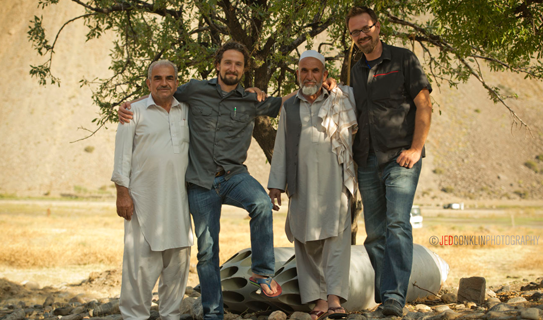
While writing my last book, I reached out to Matt Griffin, CEO of Combat Flip Flops, to answer one specific question: How did regular flip-flops turn into objects that manufacture peace through trade?
While on duty in Afghanistan, Griffin, then a U.S. Army Ranger, stumbled upon an Afghan combat boot factory that also created flip-flops for soldiers for when they were taking off their boots to pray. Feeling empathy for the people he met, he immediately knew he wanted to bring those flip-flop designs home with the goal of creating jobs and funding education in war-torn countries, such as Afghanistan.
There is no significant product innovation, but there is a story that is so much bigger than flip-flops: one that leads to sales.
“Other than materials and details, there isn’t anything special about our product. They’re flip-flops and shoes. The story leads the way into our ecosystem, then the product enables more people to tell the story. The cycle goes round and round–educating little Afghan girls throughout the process,” Griffin said.

The cause and his strong belief is indeed the foundation of a thriving business.
If you are an entrepreneur that aches to create a cause-based brand or transform an existing brand into one that does more than sell products or services, but positively affects mankind, Matt has some advice for you.
I asked him about the top challenges such entrepreneurs may face, and below are his top three pieces of advice on how to overcome them:
Don’t be discouraged, as you are dealing with a new generation of consumers willing to commit to you and your brand. Both millennials and Generation Z consumers strongly skew toward brands with a bigger mission.
Given the rise of the BOGO movement (buy-one-give-one) through TOMS and Warby Parker, the path is clear for new ventures with a social cause.
“TOMS will forever be known as the brand that made conscious capitalism a ‘thing.’ If they can make it work and are truly helping others, good on them. The one-for-one model works at scale and it’s tough for a lot of competition to get to that point. It’s not impossible, though,” Griffin said of such trends.
As my time with Matt was running out, I wanted to know what other cause-centric brand resonated with him that we should get to know, and why? He noted saffron distributor, Rumi Spice, which was founded by a female soldier and is now the single largest employer of Afghan women.
“They help Afghan farmers directly export product to the U.S. market, putting money into the hands of the farmers instead of middlemen,” Griffin said.
Stories like the one of Combat Flip Flops are awe-inspiring to me as a brand builder, and they also push us to think outside of our comfort zone, and outside of the notion that only products based on tech and innovation can turn into admired brands in today’s entrepreneurial age of disruption.

CATEGORIES: Blog Startup Advice Your Brand Launch: Brand Strategy
TAGS: Bigger Than This, Brand Development, Brand DNA, Brand Positioning, Brand Strategy, brand values, Combat Flip Flops, Matt Griffin, Rumi Spice, social enterprise, social entrepreneurship, social impact, Startup Nation
0 COMMENTS